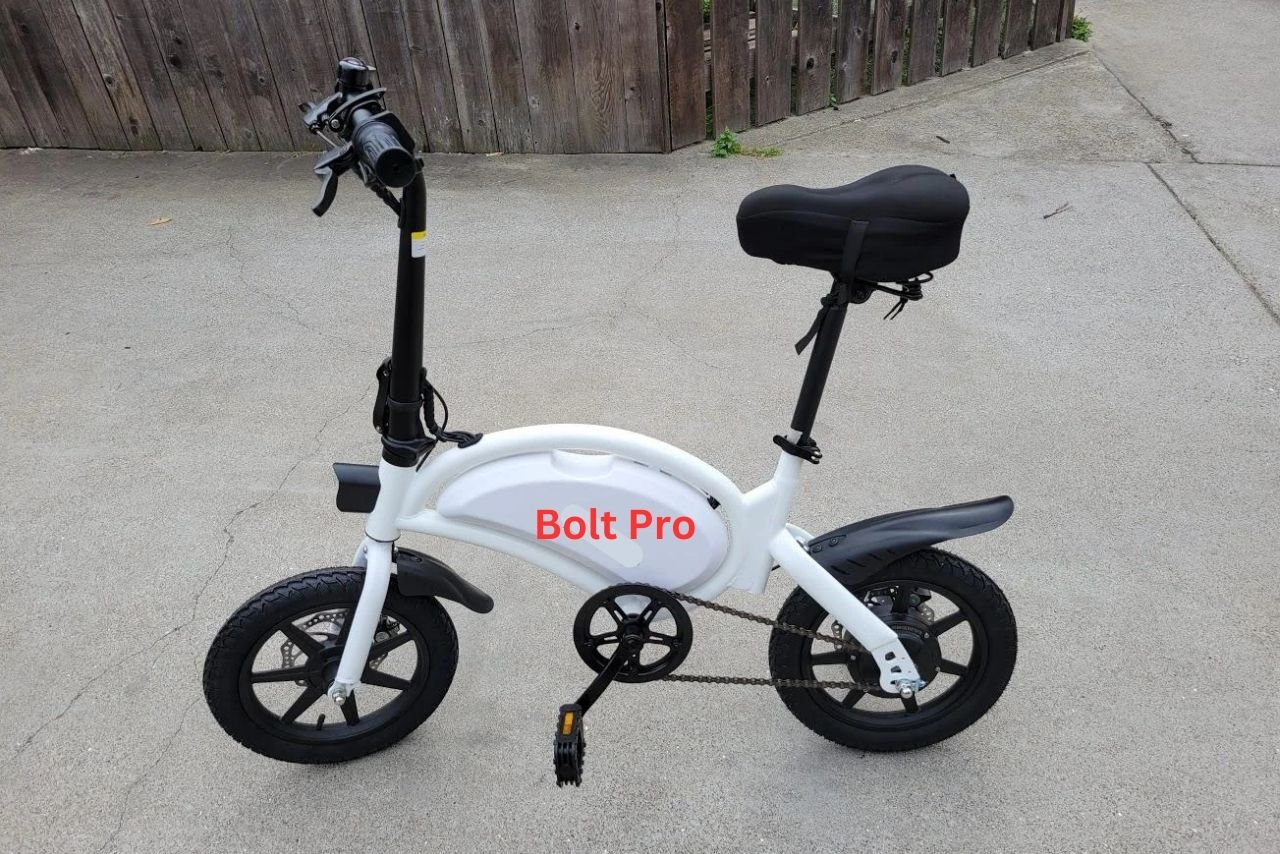If you’re looking to take your scooter tricks to the next level, building your own scooter ramp is a great way to do it. In this article, we will guide you through the process of building a scooter ramp step by step.
By following these instructions, you will be able to create a sturdy and safe ramp that will provide endless fun and excitement. So How To Build A Scooter Ramp?
Before diving into the construction, it’s important to assess your needs and space requirements. Consider the size of your scooter and the area where you plan to build the ramp and gather the necessary materials and tools.
Designing your ramp and take into account factors such as the desired height and angle, as well as the materials you will be using. With a well-thought-out design, you can ensure a smooth and enjoyable ride.
Once you have your design, it’s time to prepare the site. Clear the area of any obstacles and ensure a solid foundation for your ramp. Then, it’s time to start building the ramp structure, following the detailed instructions provided.
Safety is paramount, so be sure to add safety features such as railings and non-slip surfaces. Regularly test and adjust your ramp to ensure it’s in good condition.
How To Build A Scooter Ramp From Scratch?
Here are simple steps to build a scooter ramp from scratch.
1. Assess Your Needs and Space Requirements
You’ll want to assess your needs and space requirements before you begin building your scooter ramp. Start by evaluating your budget to determine how much you can allocate for the project.
Next, measure the available space where you plan to build the ramp. Take into account the length, width, and height of the area to ensure it can accommodate the ramp’s dimensions.
Additionally, consider the slope and angle of the ramp to ensure a safe and smooth ride.
It’s crucial to have enough space for a run-up and landing area as well. By carefully assessing your needs and space requirements, you can ensure that your scooter ramp will be built to suit your specific preferences and limitations.
2. Gather Materials and Tools
First, make sure you have all the necessary materials and tools ready to start creating your ultimate scooter adventure. Selecting the right materials is crucial for building a sturdy and safe scooter ramp.
Consider using strong, weather-resistant wood like plywood or pressure-treated lumber for the ramp surface. For the frame, choose sturdy metal pipes or galvanized steel. The table below provides a list of materials and tools you will need:
| Materials | Tools |
|---|---|
| Plywood or pressure-treated lumber | Circular saw |
| Metal pipes or galvanized steel | Drill |
| Screws or bolts | Screwdriver |
| Measuring tape | Wrench |
| Level | Safety goggles |
Using the right tools is equally important. A circular saw will help you cut the wood to the desired size, while a drill and screws or bolts will secure the frame and ramp together.
Use a measuring tape and level to ensure accurate measurements and a balanced ramp.
3. Design Your Ramp

Get ready to unleash your creativity and envision the perfect structure that’ll elevate your scooter adventures to new heights. Designing your ramp lets you create a custom design that suits your style and preferences.
Here are three key considerations to ensure the structural integrity of your ramp:
- Ramp Dimensions: Determine the length, width, and height of your ramp based on your skill level and available space. A taller ramp’ll provide more air, while a wider ramp allows for more maneuverability.
- Ramp Materials: Choose durable materials that can withstand the weight and impact of your scooter. Consider using plywood for the ramp surface and sturdy lumber for the frame. Make sure all materials are securely fastened together.
- Safety Features: Incorporate safety measures like non-slip surfacing, smooth transitions, and sturdy railings to prevent accidents and enhance the overall riding experience.
With a well-designed ramp, you can enjoy endless scooter tricks and stunts while ensuring the safety and durability of your creation.
4. Prepare the Site
To prepare the site for building your scooter ramp, you need to clear the area of any obstacles that may hinder the construction process. Start by removing any debris, rocks, or objects that may be in the way.
Once the area is clear, you should level the ground to ensure a sturdy and safe foundation for your ramp. Use a shovel or a rake to even out any uneven surfaces and make sure the ground is smooth and compacted.
5. Clear the Area
Make sure you’ve got plenty of space around you before starting to build your awesome scooter ramp. Assessing safety is crucial when preparing the site.
Begin by clearing the area of any debris or obstacles that could pose a potential hazard. Inspect the ground for any loose rocks, branches, or other objects that could interfere with the construction process or cause accidents while riding the ramp.
Take the time to remove any vegetation or weeds that may be growing in the designated area. It’s important to have a clean and level surface to ensure the stability and functionality of your scooter ramp.
6. Level the Ground
Now that you’ve cleared the area, it’s time to ensure a smooth ride by leveling the ground. The ground leveling process is crucial for a safe and efficient scooter ramp.
To begin, gather the necessary equipment: a shovel, rake, tamper, and a level. Start by removing any large debris or rocks from the area.
Next, use the shovel to dig out any uneven spots or high points. Once the ground is cleared, use the rake to spread the soil evenly and create a uniform surface.
Afterward, use the tamper to compact the soil, ensuring it is firm and stable. Finally, use the level to check for any remaining unevenness and make adjustments as necessary.
7. Build the Ramp Structure
First things first, let’s get started on constructing the awesome ramp structure for your scooter.

When it comes to ramp construction techniques, there are a few key elements to consider. Begin by measuring and marking the desired dimensions of the ramp on the ground.
Start by building the frame of the ramp using the beams, securely fastening them together with screws. Then, attach the plywood sheets to the frame, making sure they’re level and secure.
Lastly, reinforce the ramp structure with additional support beams and braces for added stability and safety.
Remember, regular ramp maintenance is crucial to ensure its longevity. Inspect and repair any damaged areas, replace worn-out materials, and keep the surface clean and clear of debris.
8. Add Safety Features
To ensure the safety of your scooter ramp, it’s crucial to add certain key features.
Firstly, you should consider incorporating a non-slip surface on the ramp to provide optimal traction for riders. This will prevent any accidental slips or falls, especially during wet weather conditions.
Additionally, it’s essential to install proper lighting for visibility, enabling riders to navigate the ramp even in low-light situations. This will greatly enhance safety and prevent any potential accidents due to poor visibility.
9. Non-slip Surface

Creating a non-slip surface on the scooter ramp ensures a safe and secure ride for riders. To achieve this, there are two effective methods you can consider:
Non-Slip Coating:
- Apply a non-slip coating to the surface of the ramp. This coating is specifically designed to provide traction and prevent slipping.
- Choose a high-quality non-slip coating that’s durable and weather-resistant, ensuring it can withstand the elements and heavy use.
- Follow the manufacturer’s instructions carefully when applying the coating to ensure proper adhesion and effectiveness.
Rubber Grip:
- Install rubber grip strips on the surface of the ramp. These strips provide an added layer of traction, reducing the risk of slipping.
- Select rubber grip strips with a textured surface to maximize grip.
- Ensure the strips are securely attached to the ramp, using adhesive or fasteners, to prevent them from shifting or becoming loose over time.
By incorporating these safety measures, you can enhance the overall safety and enjoyment of using the scooter ramp.
10. Lighting for Visibility
Additionally, incorporating proper lighting ensures optimal visibility for riders using the ramp. When it comes to lighting options for a scooter ramp, there are a few key factors to consider.
First, the lighting should be bright enough to illuminate the entire ramp area, but not too bright as to blind the riders. LED lights are a popular choice due to their energy efficiency and long lifespan.
It is important to position the lights strategically, ensuring they do not cast shadows or create glare. To ensure safety, it is recommended to install lights along both sides of the ramp, as well as at the top and bottom.
A table below provides a visual representation of different lighting options and their characteristics:
| Lighting Option | Brightness | Energy Efficiency | Lifespan |
|---|---|---|---|
| LED Lights | High | Very High | Long |
| Fluorescent | Medium | Medium | Medium |
| Incandescent | Low | Low | Short |
By considering these lighting options and taking the necessary safety precautions, you can ensure optimal visibility and safety for riders on your scooter ramp.
11. Test and Adjust
First and foremost, it’s crucial to test and fine-tune the scooter ramp to ensure maximum safety and performance. To achieve this, follow these steps:
- Fine-tuning: Start by checking the ramp’s alignment and slope. Use a level to ensure it’s perfectly straight and adjust the angle if needed. Additionally, inspect the surface for any imperfections that could affect the scooter’s performance.
- Troubleshooting: Test the ramp with a lightweight scooter first. Start with slow speeds and gradually increase to assess the ramp’s stability. Pay attention to any wobbling or shaking and make necessary adjustments. If the scooter doesn’t glide smoothly, check for any irregularities in the ramp’s surface or structure.
- Safety measures: Install safety rails on both sides of the ramp to prevent accidents. Also, ensure that the ramp is securely fixed to the ground to avoid any movement during use.
By following these steps, you can fine-tune and troubleshoot your scooter ramp to ensure a safe and enjoyable experience.
Watch Video: How To Build A Scooter Ramp?
Enjoy Your New Scooter Ramp
Get ready to have a blast using your brand new scooter ramp! Now that you’ve built your ramp and tested it out, it’s time to enjoy the fruits of your labor. Here are some tips and tricks to make the most of your ramp and have an amazing time.
First, make sure to wear appropriate safety gear such as a helmet, knee pads, and elbow pads. Safety should always be your top priority.
Next, start by practicing basic tricks like jumps and turns. As you gain confidence, you can move on to more advanced tricks like flips and spins. Remember to always start small and gradually work your way up.
To help you track your progress and inspire you to keep pushing your limits, here is a table showcasing different tricks you can try, along with a difficulty rating and a description of each trick:
| Trick | Difficulty Rating | Description |
|---|---|---|
| Jump | 2 | Basic trick where you lift both wheels off the ground |
| Turn | 2 | Simple maneuver to change direction |
| Flip | 5 | Advanced trick where you rotate the scooter mid-air |
Frequently Asked Questions
How Much Weight Can a Scooter Ramp Support?
A scooter ramp’s weight capacity will depend on its design and materials used. To determine its durability, a weight capacity analysis is conducted.
Factors like ramp angle, support structure, and load distribution are considered to ensure safe usage.
How Long Does It Take to Build a Scooter Ramp?
On average, it takes about 2-3 days to build a scooter ramp. The necessary materials include plywood, screws, a circular saw, a drill, a measuring tape, and safety equipment.
Can I Use a Scooter Ramp for Other Wheeled Sports, Like Skateboarding or Biking?
Yes, you can use a scooter ramp for other wheeled sports like skateboarding or biking. There are different types of scooter ramps available that can accommodate various skateboarding tricks.
What Are Some Common Mistakes to Avoid when Building a Scooter Ramp?
Common mistakes to avoid when building a scooter ramp include insufficient support structure, improper slope angles, and inadequate surface materials.
Are There Any Specific Maintenance Steps Required for A Scooter Ramp?
To maintain a scooter ramp, regular maintenance steps are necessary.
These include inspecting for any cracks or damage, repairing them promptly, cleaning the surface regularly, and ensuring that durability factors like the ramp’s slope and materials are maintained.
Wrap Up: How To Build A Scooter Ramp?
Building a scooter ramp requires careful assessment of your needs and space requirements. Gather the necessary tools and materials, and design the ramp to meet your specifications.
Prepare the site by clearing any obstacles and ensuring a level surface. Construct the ramp structure, making sure to follow proper safety guidelines and regulations. Add safety features such as railings and non-slip surfaces.
Test the ramp and make any necessary adjustments. With a well-built scooter ramp, you can enjoy hours of thrilling and safe scooter riding.




